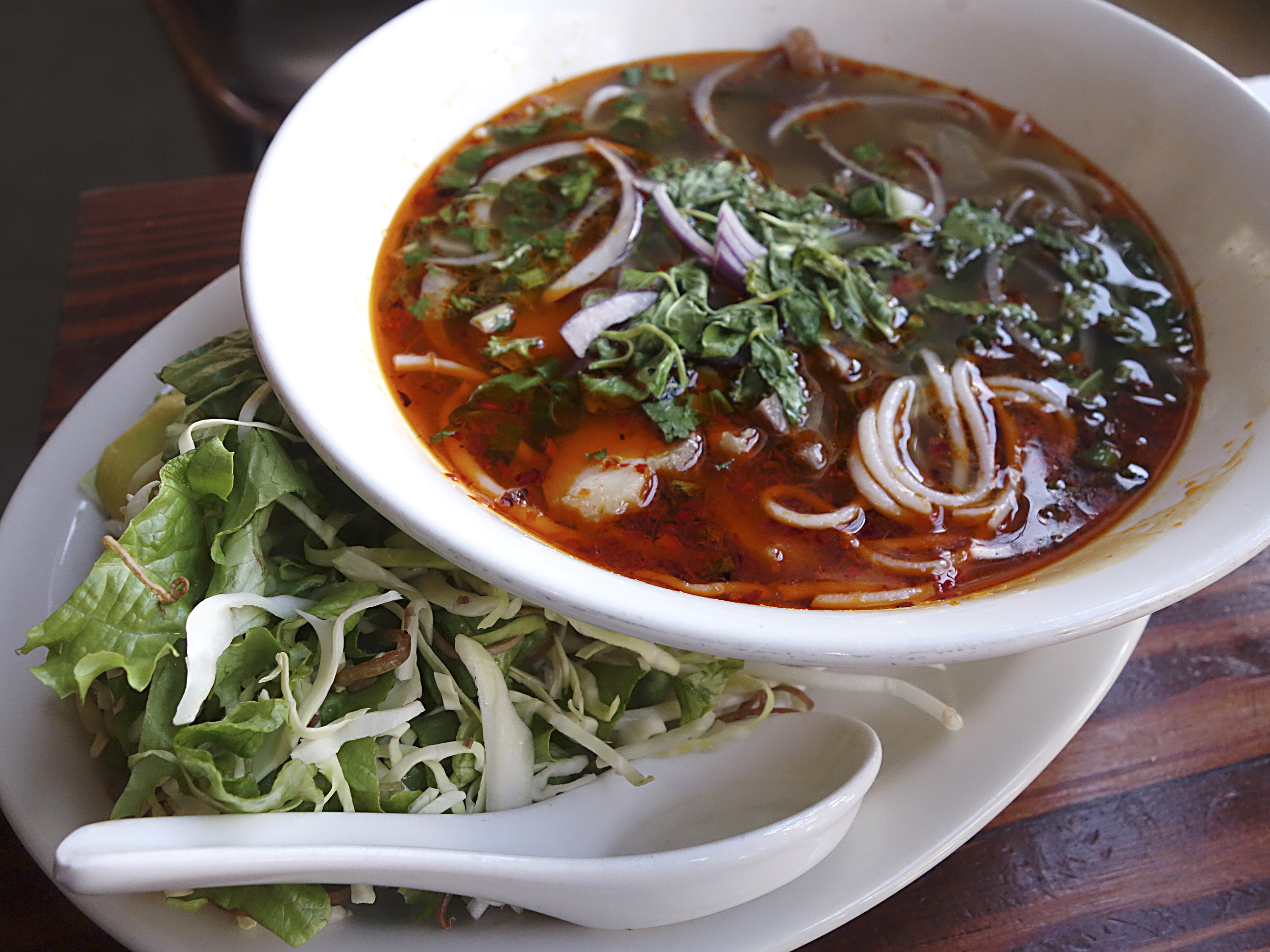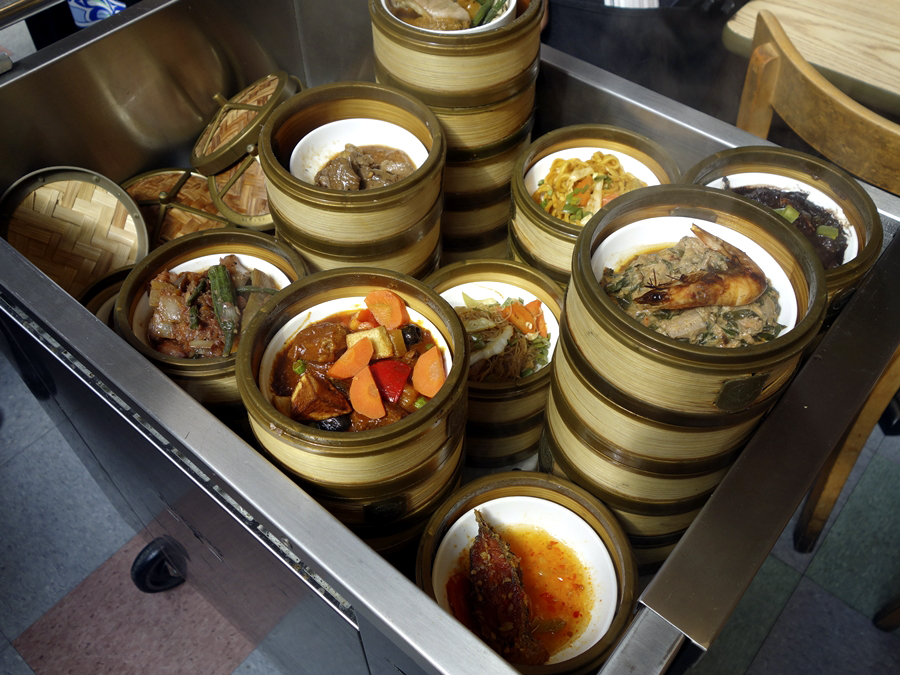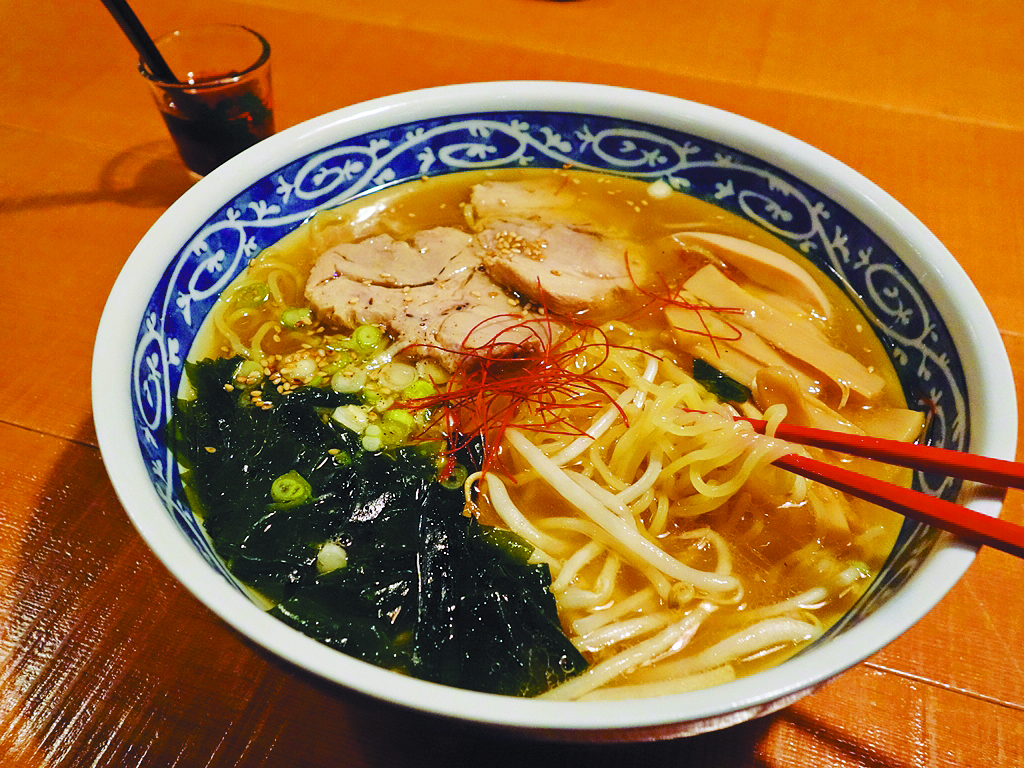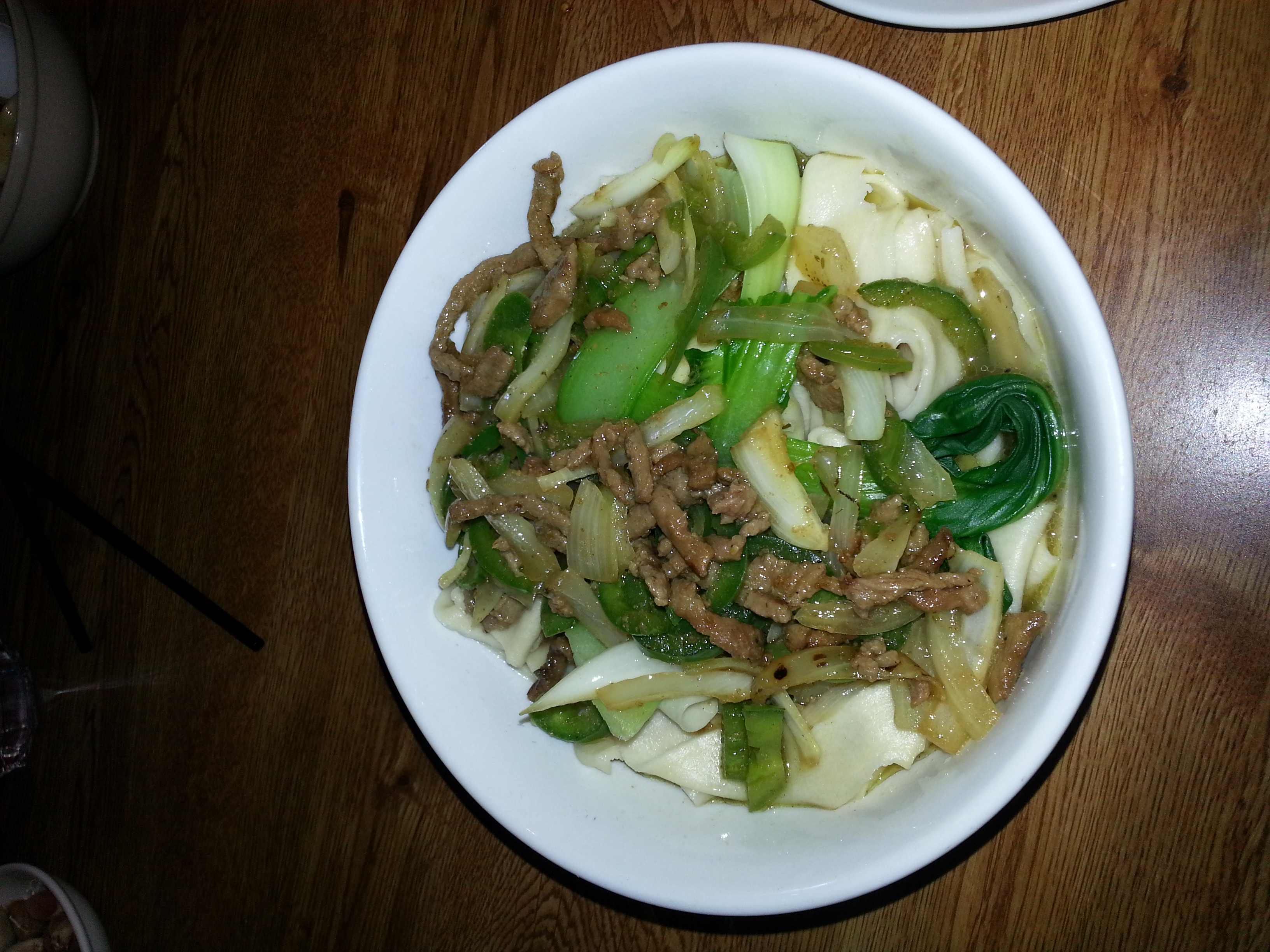Dish: Inaka UdonPlace: Showa, FremontPrice: $7.50 In the bowl: From the menu: “chilled udon, daikon oroshi and tempura crunch in cold dashi broth.” There are also green onions and nori (seaweed strips) on top. I opted to add a raw egg for 50 cents more.Supporting cast: Just what’s in the bowl.What to do: Break the egg a bit with your chopsticks, and mix it in if you’d like. Then slurp up noodles with your chopsticks and drink broth with your spoon.Noodling around: In the world of Japanese noodles, ramen is my go-to dish. Once in a while, though, I’m in the mood for udon. These wheat noodles are slightly thick and typically have good bite to them. Showa serves them two ways. In niku udon, the noodles are in a warm, beefy broth with stewed beef pieces, a hard-boiled egg, and spinach. The inaka udon, in contrast, features a cool broth and noodles that are firmer and more mochi-like in their chewiness.It’s the cool broth that makes Showa’s inaka udon a refreshing summertime treat. The grated daikon (oroshi) adds coolness as well as sweetness to the dish. (Daikon is also full of vitamins and nutrients.) Tempura crunch refers to tempura batter fallout in the oil, often sold in “Rice Krispies” form as tenkasu, and blends well with the soup while providing soft texture (and perhaps psychological crispiness).Udon noodles in cool broth are supremely slurpable. But be sure to alternate sips of broth with the noodle slurps. I’m told the dashi is made on-site, and it makes for a delicious broth. And you’ll definitely want the raw egg, because everything’s better with a raw egg, right? One point of confusion: I’m not sure why this udon dish is called “inaka,” which means countryside. It’s the niku udon which I think of as inaka–as there’s meat, and it’s warm and comforting. Showa’s inaka udon seems more urban and refined to me. I know there’s a brand of noodles called inaka udon, but Showa’s udon seems to be frozen, which is what I eat at home. That said, I’d love to see someone prepare fresh (Sanuki) udon in a Seattle restaurant.If you want more: Given that the inaka udon is meatless, I’d suggest getting the butabara, which is grilled pork belly on a skewer ($3.50). I like this better than Showa’s yakitori ($3), which is a skewer of grilled chicken basted with soy and sake. (I prefer yakitori with salt instead of “tare” sauce, and when I crave yakitori, I conjure up liver, kidneys, skin, and other offbeat parts of the chicken.) If you’re looking for more vegetables, go gomaae–boiled spinach with a strong and pleasant sesame dressing ($3.50).Be aware/beware: Showa offers happy hour from 5-7 p.m. and 10 p.m. until closing. Happy hour knocks one dollar off certain menu items, and offers some drink specials. As this is an izakaya, there’s a focus on drinking, with the limited menu of food to go with your wine, beer, or sake. Portions are fairly small (it’s really a small plates place), so you’ll need to order a number of dishes if you’re looking to cobble together a meal.One more thing: The inaka udon is a bukkake udon, of sorts. Hmm. I smell a Sexy Feast dish. Stay tuned…Follow Voracious on Facebook and Twitter. Follow me on Twitter.
More Stories From This Author
For 50 years, Zeke’s off US 2 has served delicious burgers
It’s been a popular pit stop in Gold Bar for skiers and hikers, and the same family still runs it.
By
Evan Thompson • June 6, 2019 11:05 am
With ‘Game of Thrones’ ending, it’s time for a proper feast
How to make a meal inspired by the Lannisters’ and Starks’ world, fit for the King in the North.
By
Ben Watanabe • May 15, 2019 1:30 am
Stash Box: 2016-2019
Time to roll one for the road …
By
Meagan Angus • February 26, 2019 3:15 pm







